




reproduced from original documents in the
library holdings ofDartmouth College, Hanover, New Hampshire, USA
Copyright © 2002 by Dr. David C. Bossard

| Pages | |
| FIRST PERIOD — GEOLOGICAL KNOWLEDGE IN THE AGES OF ANTIQUITY | 1-11 |
| 001 002 003 004 005 006 007 008 009 010 011 | |
|
[002] The Mosaic account of the
Creation far excels the Babylonian in its noble simplicity and in the
strength and beauty of the language. In it the origin of the world, of
the earth and its inhabitants, is represented as the work of a personal
Almighty God. The Jews were alone among the great nations of antiquity
in realising the godhead as a unity--all powerful, all-embracing.
Babylonian Creation, gods Tiamat and Marduk, Greek cosmogony: Hesiod Theogony, Thales of Miletus, Anaximander (611 BC), Xenophanes of Colophon (624 BC), Herodotus (484 BC), Heraclitus (535 BC), Pythagoras of Samos (582 BC), Empedocles of Agrigentum (492-432 BC), Leucippus and Democritus of Abdera (c. 490 BC) atomic philosophy, Anaxagoras of Clazomenae (501 BC), Plato (427 BC) - Atlantas in Timaeus, Aristotle (384-322 BC) Physics, Theophrastus of Lesbos (368-284 BC) On Stones (lost work on fossils). Eratosthenes (276-196 BC) accurate estimate of earth size, Strabo (63 BC) continental subsidence and elevation, Seneca Physician to Nero (4 BC - 65 AD) Quæstiones Naturales on earthquakes and volcanoes - primitive earth a watery chaos, Pliny the Elder (23-79 AD) Historia Naturalis in 37 books (died in first outbreak of Vesubius in 79 AD), |
|
| SECOND PERIOD — THE BEGINNINGS OF PALÆONTOLOGY AND GEOLOGY | 11-46 |
Various opinions about Fossils, 13; Hypotheses of the Earth's Origin and history, 23; Beginnings of geological observation, 34; G. L. Leclerc de Buffon, 41; Volcanoes and earthquakes, 44. |
|
| 011 012 013 014 015 016 017 018 019 020 021 022 023 024 025 026 027 028 029 030 031 032 033 034 035 036 037 038 039 040 041 042 043 044 045 046 [014] Fracastoro (1483-1553)
repudiated..the view that explained fossils as creatures left by the
great Flood. The Flood, he said, was of short duration, and in the
nature of things it would have left not marine but fresh-water mussels
behind; further, on the assumption that the mussels had been carried
from the ocean to the land by the Flood, their remains would have been
scattered over the surface of the land. [rather] the fossils were the
remains of animals which had once lived in the localities where their
remains are now imbedded.
Caliphs Al Mansur,
Harûn-al-Raschid, Al Mamûn, Copernicus
(1473-1543), Columbus, Vasco da Gama, Platonic Academy of Cosmo di
Medici, Academy in Padua (1520), Academy of Natural Science at Naples
(1560), Academy dei Lincei in Rome (1590) founded by Marcese de
Monticelli, Académie Française (1663), Royal Society of
London (1645), Académie des Sciences in Paris (1666), Akademie
der Wissenschaften in Berlin (1700), Academy in St. Petersburg (1725),
Royal Society of Sciences in Upsala (1725), Avicenna (980-1037), Albert
von Bollstædt (Albertus Magnus) (1193-1280), Leonardo da Vinci
(1452-1519), Alessandro degli Alessandri (1461-1523), Hieronymus
Fracastoro (1483-1553), George Bauer (Agricola) (1494-1555) De natura fossilium - the father
of metallurgy (Werner), Conrad Gesner of Zürich (??-1565), Michele
Mercati, Metallotheca Vaticana
by Lancisi, Martin Lister (1638-1711) laid down the principle that
different rocks might be distinguished according to their particular
fossil contents. Edward Lhuyd (Luidius), Karl Nikolaus Lang Historia lapidum figuratorum Helvetiae
(1708), Johannes Bartholomew Beringer, Lithographia Würceburgensis
(1726), Lügensteine = false fossils, Bernard Palissy (1580), Fabio
Colonna Osservanzioni subli animali
aquatici e terrestrí (1616), Nikolaus Steno, John Ray,
John Woodward, Leibnitz, Scheuchzer, Robert
Hooke (1635-1703) use of fossils to reveal historical past,
Diluvialists = all fossils are vestiges of the great Deluge,
Scheuchzer, Specimen Lithogr.
Helveticæ Curiosæ (1702), Johann Gesner, Bourguet,
Burtin, Johann Baier Oryctographica
Norica (1712), Antoine de Jussieu (1718), George Wolfgang Knorr
(1705-1761) and Johann Ernst Immanuel Walch (1725-1778) Die Sammlung von Merkwürdigkeiten der
Natur und Alterthümer des Erdbodens in 4 volumes -
trilobites named, Giordano Bruno (??-1600), Athanasius Kircher
(1602-1680) Mundus subterraneus
first observed the steady increase of temperature with depth in mines,
Varenius Geographia generalis,
Nikolaus Steno (1638-1687) De solido
intra solidum naturaliter contento (1669) --argued
unfossiliferous rocks were formed before life existed on the earth, at
a time when the earth was enveloped in a universal ocean, Descartes
(1596-1650) Principia
Philosophiæ, George F. Leibnitz (1646-1716) Protogæa, Dr. Thomas
Burnet, (1681), John Woodward (1665-1722) Sacred Theory of the EarthNatural History
of the Earth and Terrestrial Bodies (1695), William
Whiston (1666-1753) Theory of the
Earth, John Ray Three
Physicotheological Discourses (1693), Antonio Vallisnieri
(1661-1730), Antonio Lazzaro Moro (1687-1740), De Maillet Telliamed (1715), Needham - Mosaic
Days are periods of protacted langth, Justi Geschichte des erakörpers
(1771), Friedrich Mylius, John Strachey, Holloway, Spada, Schiavo,
Donati, Baldassari, Targioni Tozetti, Christopher Packe first
geological map in (1743) A New Philosophical-Chorographical
Chart of East Kent , Johann Gottlob
Lehmann (??-1767) Versuch einer
Geschichte des Flötzgebirge (stratified rocks) (1756), G. Christian Füchsel
(1722-1773), Giovanni Ardulino (1713-95) first divided rocks int
Primitive (unfossiliferous), Secondary and Tertiary groups, Gottlieb
Gläser first coloured geological map (1775), Wilhelm von
Charpentier Mineralogy of Chur-Saxony,
Jean Etienne Guettard (1715-86) mineralogical atlas of France,Giraud
Soulavie, Historie naturelle de la
France meridionale (1780), Rouelle, Johann Ferber, Ignaz von
Born, George Louis Leclerc de Buffon (1707-1788) Théorie de la Terre (1749),
Époques de la Nature
(1778), Martin Lister, Lemery, Faujas de Saint-Fond (172-1819) On the Extinct Volcanoes of vivarais and
Velay,
|
|
| THIRD PERIOD — THE HEROIC AGE OF GEOLOGY FROM 1790-1820 | 46-145 |
Pallas and De Saussure, 49; A. G. Werner and his school, 56; Leopold von Buch 61; Alexander von Humboldt, 64; Hutton, Playfair, and J. Hall, 67; Theories of the Earth's Origin, proposed by De Luc, De la Métherie, Breislak, Kant, Laplace, 75; Local geognostic descriptions and stratigraphy: (a) Germany, 81; (b) Austria-Hungary and the Alps, 87; (c) Italy, 94; (d) France, Belgium, Holland, and the Iberian Peninsula, 100; (e) Great Britain, 108, (f) Scandinavia and Russia, 115; (g) America, Asia, Australia, Africa, 119; Progress of Petrography: Neptunists, Volcanists, and Plutonists, 122; Palæontology, 125; Text-books and handbooks of Geognosy and Geology, 142. |
|
| 046 047 048 049 050 051 052 053 054 055 Abraham Gottlob
Werner (1749-1817) On the External
Characters of Fossils, geognosy, William Smith the father of historical geology
was the first to make known that the stratified rocks of England could
be identified and arranged in chronological order according to their
organic content, Alexandre Brongniart, Cuvier catastrophy theory,
Lamarck, Schlotheim, Sowerby, Hutton, Dolomieu, Von Humboldt, Von Buch,
Breislak, Peter Simon Pallas (1741-1811) explored Russia, Siberia,
Crimea, Horace Benedicte de Saussure (1740-1799) Voyage dans les Alpes,and Instructions to Young Geologists
,
A.G. Werner and his School 56 056
057 058
059 060
061 062
063 064
065 066
Franz Ambros Reuss,
D'Aubisson de Voisins Traité
de Géognosie (1819), Jameson Elements of Geognosy (1808), Voigt,
Werner New Theory of the Origin of
Mineral Veins, Leopold von Buch (1774-1852) The greatest
geologist of his time Through Norway
and Lapland (1806) A
Physical Description of the Canary Islands (1825), Alexander
von Humboldt (1769-1859) Travels in
the Equinoctial Regions on the New Continent in 20 volumes, The Cosmos.
Hutton, Playfair and Hall 67 067 068 069 070 071 072 073 074 [072] Hutton's genius first gave
to geology the conception of calm, inexorable nature working little by
little -- by the raindrop, by the stream, by insidious decay, by slow
waste, by the life and death of all organised creatures -- and
eventually accomplishing surface transformations on a scale more
gigantic than was ever imagined in the philosophy of the ancients or
the learning of the Schools.
James Hutton (1726-1797) Theory of the Earth (1785, 1795), Sir James Hall (1762-1831), John Playfair (1748-1819) Illustration of the Huttonian Theory (1802), Theories of the Earth's Origin proposed by De Luc &c. 75 075 076 077 078 079 080 Jean André de Luc Physical and Moral Letters on the History
of the Earth and of Man (1779) in 5 volumes, Elementary Treatise of geology, De
la Métherie (1791), Théorie
de la Terre, Scipio Breislak (1748-1826) Text-book of Geology, Immanuel Kant
Naturgeschichte des Himmels
(1755), Laplace exposition du
Système du Monde (1796),
Local Geognostic Descriptions and Stratigraphy-- A. Germany 81 081 082 083 084 085 086
Georg Lasius (1752-1833) Observations on the Harz Mountains
(1789), Johann Karl Wilhelm Voigt (1752-1821) Mineralogical Journey through the Duchy of
Weimar and Eisenach (1781-5) Text-book
of Geognosy (1792), Johann Ludwig Heim (1741-1819) Geological Descriptions of the Thuringian
Forest, Johann Karl Freiesleben (1774-1846) Description of the Harz Mountains
(1799), Leopold von Buch Attempt at
a Geognostic Description of Silesia, Mathias von Flurl
(1756-1823) A Description of the
Mountains of Bavaria and the Upper Pfalz,
B. Austria-Hungary and the Alps 87 087 088 089 090 091 092 093 Johann Ehrenreich von Fichtel
(1732-95) Mineralogy of Transylvania,
Hans Conrad Escher (1767-1823)
C. Italy 94 094 095 096 097 098 099 D. France, Belgium, Holland, and the Iberian Peninsula 100 100 101 102 103 104 105 106 107 Brongniart and Cuvier work on
Paris Basin (1808) first work to adopt method of William Smith, Jean
Baptiste Julien d'Omalius d'Halloy (1783-1875) geological map of France
and adjoining territories of Belgium, Germany and Switzerland (1822) in
D'Halloy Text-book of geology.
E. Great Britain 108 108 109 110 111 112 113 114 William Smith (1769-1839) the
Father of English Geology, the first to recognize the importance of
fossils in their full significance as a means of determining the
relative age of strata, Strata
identified by Organized Fossils, containing Prints of the most
characteristic specimens in each stratum (1816-1819) in 4
volumes (incomplete), George Bellas Greenough (1778-1855) founder of
Geological Society of London, Geological Map of England and Wales
(1819) based in part on William Smith's, John MacCulloch (1773-1835) Description of the W.I. of Scotland
(1819), William Buckland (1784-1856), Conybeare
F. Scandinavia and Russia 115 115 116 117 118 Urban Hiärne
(1641-1724), Carl von Linné (Linnaeus) (1707-78) founder of
constructive geology in Sweden Systema
Naturæ (1768 edition) complete list of fossils know to
him, Erich Pontoppidan Natural
History of Norway (1753), Leopold von Buch Journey to Norway and Lapland
(1810), Johan Georg Gmelin Reise
durch Siberien (1752)
G. America, Asia, Australia, Africa 119 119 120 121 Guettard Canadian Fossils
1752, Maclure (1763-1840) treatise and map on geology of the United
States (1809), Patrin Account of his
Travels in the Altaï Mountains (1783)
Progress of Petrography -- Neptunists, volcanists and Plutonists.122 122 123 124 Palæontology 125 125 126 127 128 129 130 131 132 133 134 135 136 137 138 139 140 141 Baron Ernst von Schlotheim
(1764-1832) study of fossils (1820), Petrefaktenkunde, Defrance Sketch of Fossil Organisms
(1824), James Parkinson Organic
remains of a Former World (1804-11), Miller of Danzig Natural History of the Crinoidea or
Lily-shaped Animals (1821), Denis de Montfort Systematic conchology (1808-10),
Jean Baptiste de Monet, Chevalier de Lamarck (1744-1829) Natural History of Invertebrate Animals (1815-22)
Lamarck held that acquired characters could be transmitted to
descendents, James Sowerby Mineral
Conchology of Great Britain (1812 - completed 1845 by his son
James de Carle Sowerby), J.C.M. Reinecke Monograph of the Ammonites occurring in
Coburg and Franconia (1818), Leop. Chr. Friedr. dagobert
Georges Cuvier (1769-1832) erected Comparative Anatomy into an
independent science and defined principles upon which the investigation
of fossil Vertebrates could be carried out with accuracy. Researches on Fossil Bones (1812,
last ed. 1834-36) 10 Vols of text and 2 vols of plates - In the whole
literature of comparative anatomy and palæontology there is
scarcely any work that can rank with this great masterpiece of Cuvier,
William Buckland Reliquiæ
diluvianæ (1823)
|
|
| FOURTH PERIOD — NEWER DEVELOPMENT OF GEOLOGY AND PALÆONTOLOGY | 145-152 |
General survey, 145; The influence of the Universities, of Geological Societies, and of the Geological Survey Departments, 146. |
|
| 145 146 147 148 149 150 151 152 [145] The leaders of thought, whose activities towards the close of the eighteenth, and in the first twenty years of the nineteenth century, won for geology an acknowledged place as a scientific study, were almost all of them men of independent means. Only a limited number of the founders of geology and palæontolgy belonged to teaching bodies. The universities were unwilling to countenance young and indefinite sciences, and only tardily incorporated them in their academical curricula. |
|
| CHAPTER I. | |
| COSMICAL GEOLOGY | 153-171 |
Cosmogony, 153; The Sun, 156; The fixed stars and planets, 157; The Moon, 161; Meteorites and falling stars, 163; Geogeny, 166. |
|
| 153 154 155 156 157 158 159 160 161 162 163 164 165 166 167 168 169 170 171 [154] By the use of the spectrosscope it has been ascertained that all matter has essentially the same constitution throughout the universe, the same substances taking part in the comosition of the earth, the sun, the fixed stars, and the planetary nebula. [162] The American geologist Gilbert has contested the opinion generally accepted at the present day, that the craters and ring-shaped ramparts in the moon are volcanic in their origin. Gilbert regards them as impressions made upon the moon by the collision of gigantic meteorites. > Cosmogony - origins of the universe and earth, Kirchhoff and Bunson - spectroscope (1859), theories of Kant and Laplace, Faye, Sur l'Origine du Monde (1896), mechanical theory of heat, condensation heat source of stellar radiation, Contrary rotation of satellites of Uranus and Neptune, David Fabricius movable spots on the sun (1610), Geogeny, Henry de la Beche Researches in Theoretical Geology. |
|
| CHAPTER II. | |
| PHYSIOGRAPHICAL GEOLOGY | 172-185 |
Form, size, and weight of the Earth, 175; The Earth's internal heat and the constitution of its interior, 175; Morphology of the Earth's surface, 181. |
|
| 172 173 174 175 176 177 178 179 180 181 182 183 184 185 [173] [The Cosmos] a magnificent physical description of the world gives a complete account of the knowledge of natural science in all civilised races up to the middle of the nineteenth century. It is a more extensive work than had ever before been undertaken by a single indiidual. ... it is a mirror of the world, of the most faithful kind. [175] All determinations of the earth's gravity agree in showing that the gravity of the earth as a whole is very much greater than the gravity of the rocky crust, which has an average gravity not exceeding 2.5. Thus we know the imporant geological fact that the interior of the earth is neither empty nor can it be filled with water, but it must consist of substances of very great weight. Physiographical geology, Bernhard Varenius Geographica Generalis (1672), Alexander von Humboldt The Cosmos (1845), seismological observations, |
|
| CHAPTER III. | |
| DYNAMICAL GEOLOGY | 186-323 |
General survey, 186; Carl von Hoff, 187; Sir Charles Lyell, 189; (a) Geological action of the atmosphere, 197; (b) Geological action of water — Springs, 200; Chemical action of water, 202; Erosion, 203; Denudation, 214; Mechanical sediments, 215; Chemical deposits in water, 217; (c) Geological effects of ice, 220; Glaciers, 220; The Ice Age, 222; (d) Geological action of organisms, 239; Peat, 240; Coals, 240; Siliceous earth, 243; Algal and foraminiferal limestone, 243; Coral reefs, 245; Petroleum, 253; (e) Volcanoes, 254; (f) Earthquakes, 280; (g) Secular movements of' upheaval and depression 285; (h) Older dislocations in the earth's crust, 295; Tectonic structure and origin of the continents and mountain-chains, 306. |
|
General survey, 186; Carl von Hoff, 187 188 Sir Charles Lyell, 189 190 191 192 193 194 195 196 Dynamical Geology, Simon Stevin (1548-1620), Carl Ernst Adolf von Hoff, Cuvier's catastrophe theory, Charles Lyell (1797-1875) Principles of Geology (1830), Travels in North America (1845), uniformitarianism, W. Hooker Flora of Australia (1859), Charles Darwin Origin of Species (1859), Lyell On the Age of the Human Race (1863), Sir Henry de la Beche How to Observe (or The Ggeological Observer) (1835). (a) Geological action of the atmosphere, 197 198 199 (b) Geological action of water — Karl Gustav Bischof (1792-1870) (1846-47), sand-pipes, subterranean caverns, origin of caves, Dana Text-book of Chemical and Physical GeologyReports of Wilkes' Exploring Expedition and Manual of Geology (1863), Newberry Report upon Colorado (1861), gilbert Geology of the Henry Mountains (1877), J. W. Powell, (c) Geological effects of ice, 220; Glaciers, 220 221 The Ice Age, 222 223 224 225 226 227 228 229 230 231 232 233 234 235 236 237 238 239 Scheuchzer Reisebeschreibung der Schweizer Alpen, De Saussure Book of Travels (1796-1803), Louis Jean Rudolph Agassiz (1807-1873) Fossil Fishes To the last Agassiz combated Darwin's theory of evolution, Agassiz work on glaciers (1840) Systéme Glaciaire (1847) ice age theory, Charpentier Essai sur les Glaciers (1841) one of the greatest contributions to geology of his time, Sir Andrew Crombie Ramsay (1814-??) Text-book of the Physical Geology and Geography of Great Britain (1864-78) demonstrated that almost the whole of Great Britain had been covered by a vast ice-sheet, Penck The Glaciation of the German Alps (1882) (d) Geological action of organisms, 239; [239] Animal creation serves as an intermediary between the atmosphere and the earth's surface, utilising and metabolising matter derived from both, and effecting transferences from one to the other. Peat, 240; Coals, 240 241 242 Siliceous earth, 243; Algal and foraminiferal limestone, 243 244 Coral reefs, 245 246 247 248 249 250 251 252 253 [249] Charles Darwin's theory assumes that every atoll reef was originally the fringing reef of some island, but owing to the subsidence of the ocean-floor, the fringing reef was gradually converted into a barrier reef, and finally, by continued subsidence of the floor, passed into the form of an atoll. [252] In general, most scientific authorities on coral reefs at the present day no longer accept Darwin's theory of widespread subsidence as applicable to the American or Ausstralian reefs, or to those of the Red Sea. Petroleum, 253; Rennie Essays on Peat-Moss (1810), coral reefs - Reinhold Forster, Kotzebue voyage of exploration (1814-18), Adalbert von Chamisso, Freycinet Expedition (1818-20), Ehrenberg On the structure and Form of the Coral Growths in the Red Sea (1834 in Abhandlungen of the Berlin Academy), Charles Darwin The Structure and Distribution of Coral Reefs (1842), Beagle Expedition (1832-1834), James Dana Wilkes Expedition (1839-40) investigated coral reefs and accepted Darwin's theory. (e) Volcanoes, 254 255 256 257 258 259 260 261 262 263 264 265 266 267 268 269 270 271 272 273 274 275 276 277 278 279 Controversy between Neptunists and Vulcanists, Alexander von Humboldt, Leopold von Buch On the Geognostic relations of the Trap Porphyry(1813), Dr. Charles Daubeny Description of Active and Extinct Volcanoes, etc. (1826) tabulation of active volcanoes, George Poulett-Scrope (1797-1875), Charles Lyell, Constant Prévost sent by French Government to study the newly-formed Graham's Island. The island vanished in three months and Prévost was one of the few favoured individuals who had succeeded in visiting and making drawings of it. Ami Boué Geological Essay on Scotland (1820) distinguished between basaltic sheets and dykes, Sir Archibald Geikie The Ancient Volcanoes of Great Britain (1897), Alexander von Humboldt first to explore Mexican volcanoes, Suess Der Antlitz der Erde (1888), Dr. Reyer, Theoretische Geologie (1888) (f) Earthquakes, 280 281 282 283 284 R. Hoernes Erdbehenkunde, (1893), Robert Mallet & J. W. Mallet Earthquake Catalogue for the period 1606-1858, (g) Secular movements of' upheaval and depression 285 286 287 288 289 290 291 292 293 294 Hjärne conducted direct observation by having marks hewn on the rocks of the coast - Changes in the sea level in Scandanavia (1702), Playfair attributed changes to an elevation of the land in objection to theory of Celsius that the changes were due to lowering of the ocean-surface, Robert Chambers Ancient Sea-Margins, Suess Das Antlitz der Erde, (h) Older dislocations in the earth's crust, 295 296 297 298 299 300 301 302 303 304 305 (i) Tectonic structure and origin of the continents and mountain-chains, 306 307 308309 310 311 312 313 314 315 316 317 318 319 320 321 322 323 [304] James Dwight Dana (1813-1895) was the geologist who first gave clear expression to the theory of horizontal compression in explanation of the origin of mountains. His reports on the geology of the Pacific Ocean, the volcanoes of the Sandwich Islands and coral reefs, as well as his comprehensive works on Zoophytes and crustaceans, are among the finest productions in the literature of scientific travel. Léonce Élie de Beaumont (1798-1874) geological map of France (1843) with Dufrenoy and Brochant de Villiers, On Mountain-Systems (1852 in 3 volumes) mountain-folding due to shrinking earth radius, James Dwight Dana (1813-18895) horizontal compression formed mountaions, geo-synclinals, Joseph le Conte, Eduard Suess (1831-1914) Das Antlitz der Erde (The Face of the Earth) (3 vols: 1883-85, 1888, 19??) surveys history of terrestrial change during the geological epochs, Heim Untersuchungen über den Mechanismus der Gebirgsbildung (1878), Bailey Willis, The Mechanics of Appalachian Structure (1888), Köhler (1886), Reyer, Die Störungen der Gänge, Flötze und LagerTheoretische Geolgie (1888), crust tectonics, Gondwana Land |
|
| CHAPTER IV. | |
| PETROGRAPHY | 324-362 |
Werner, 324; Nicol, 326; Ehrenberg, 326; C. F. Naumann, 327; G. Bischof, 327; H. Clifton Sorby, 328; Ferdinand Zirkel, 329; Vogelsang, 329; Rosenbusch, 331; Fouqué and Michel-Lévy, 334; Scheerer, 342; Durocher, 343; A. Daubrée, 344; Origin of rocks, 346; Teall, 349; Broegger, 350; Crystalline schists, 352; Metamorphism of rocks, 354; Dynamo-metamorphism, 357; Lapworth, 360. |
|
| 324 325 326 327 328 329 330 331 332 333 334 335 336 337 338 339 340 341 342 343 344 345 346 347 348 349 350 351 352 353 354 355 356 357 358 359 360 361 362 Carl Cäser von Leonhard (1779-1862) Charakteristik der Felsarten (1823), Pierre Louis Antoine Cordier (1777-1862), Ehrenberg microscopic studies, limestones composed of diatoms & foraminifera Mikrogeologie (1854), Naumann Lehrbuch (1850) representation of the state of petrography. Gustav Bischof Text-book of Chemical and Physical Geology, Henry Clifton Sorby revolutionised the teaching of petrography. He deduced (1858) the aqueous or volcanic origin in crystals from the presence of fluid, gaseous, crystalline, vitreous and slaggy inclusions, Ferdinand Zirkel Lehrbuch der Petrographie (1866) and Die Mikroskopische Beschaffenheit der Mineralien und Felsarten (1873) made use of polarised light in analysing crystalline composition and structure, Volgesang Philosophie der Geologie und Mikroskopische Gesteins-Studien (1867), Rosenbusch Die Mikroskopische Pysiographie der petrographisch wichtigen Mineralien (1873, 2nd Ed 1885) and Elements of Petrology (1898), Michel-Lévy & Lacroix Les Minéraux des Roches (1888), |
|
| CHAPTER V. | |
| PALÆONTOLOGY | 363-424 |
General principles, 363; Fossil plants, 368; Fossil animals, 375; Protozoa, 383; Spongida, 386; Cœlelenterata, 388; Echinodermata, 392; Brachiopoda, 397; Mollusca, 400; Lamellibranchiata, 401; Gastropoda, 401; Cephalopoda, 402; Arthropoda, 406; Vertebrata, 409; Fishes, 410; Amphibians, 412; Reptiles, 415; Birds, 418; Mammals, 418. |
|
| 363 364 365 366 367 368 369 370 371 372 373 374 375 376 377 378 379 380 381 382 383 384 385 386 387 388 389 390 391 392 393 394 395 396 397 398 399 400 401 402 403 404 405 406 407 408 409 410 411 412 413 414 415 416 417 418 419 420 421 422 423 424 Palæontology or Petrefaktenkunden, stratigraphical palaeontology - determine true order and relative age of rock deposits, biological palaeontology - determine the genesis and evolution of living forms, Heinrich Georg Bronn (1800-1862) (1835-38) first attempt at Chronological succession of fossil organisms, Bronn & H. von Meyer Lethæa Geognostica (1835-8), Bronn and Goeppert & H. von Meyer Index Palæontologica (1848-9), Georg August Goldfuss (1782-1848) and Count George Münster (1776-1844) Petrefacta Germaniæ, Alcide d'Orbigny Paléontologie Française (1840-55) & Elementary Course of Palæontology and Stratigraphical Geology (1849), Buckland (1836) Mineralogy and Geology impresses upon the reader the confirmation given by the geological record to the words of Holy Writ; then follows an attractively written account of fossil organisms, G. A. Mantell Medals of Creation (1844), François Jules Pictet (1809-1872), Traité élémentaire de Paléontologie (1844-46), H. B. Geinitz The Princiiples of Palæontology (1846), G. C. Giebel Palæontology (1852), F. A. Quenstedt Petrefactenkunde (1852) and Petrefaktenkunde Deutschlands (published between 1846-1878), Sir Richard Owen Palæontology (1860), Oswald Heer (1809-1883) The Primeval World of Switzerland (1864) - In his opinion the variations of species and genera were not accomplished by slow modifications but at definite periods of creation by a more or less complete re-modelling of previously existing species., Freiherr von Ettingshausen (1862-1897) Physiotypia Plantarum Austriacarum (1867) showed the importance of leaf venation for the systematic identification of isolated fossil leaves, Karl A. von Zittel Handbook of Palæontology (1876-93 in 4 volumes) with S. Scudder, W. Schimper and A. Schenk, |
|
| CHAPTER VI. | |
| STRATIGRAPHICAL GEOLOGY | 425-541 |
A. The early foundations of stratigraphy, 425; B. Special stratigraphy, 438; (a) Archæan and pre-Cambrian rocks, 439; (b) Cambrian and Silurian Systems, 441; (c) Devonian system, 448; (d) Carboniferous system, 450; (e) Permian system, 453; (f) Triassic system, 459; (g) Jurassic system, 497; (h) Cretaceous system, 514; (i) Tertiary system, 526; (k) Quaternary formations, 538. |
|
| A. The early foundations of stratigraphy, 425 426 427 428 429 430 431 432 433 434 435 436 437 Füchsel defined the term Formation in 1762 for a series of strata accumulated under similar conditions and in immediate succession to one another, Paul Ger. Deshayes (1796-1896) , P. Desnoyers, H.G. Bronn, Tertiary subdivisions named by Lyell: Eocene, Miocene, Pliocene, Pleistocene, Adam Sedgwick (1785-1873) and Roderick Impey Murchison (1792-1871) subdivided the strata below the coal measures, Murchison The Silurian System (1839), Lonsdale, John Phillips (1800-1874) nephew of William Smith coined terms Palaeozoic (Transitional series - Cambrian through Devonian), Mesozoic (Secondary series) and Cainozoic (Tertiary series), Murchison Siluria (1854) B. Special stratigraphy, 438 (a) Archæan and pre-Cambrian rocks, 439 440 Van Hise pre-Cambrian formation in North America (1892), Algonnkian, Archaean, (b) Cambrian and Silurian Systems, 441 442 443 444 445 446 447 C. D. Walcott, James Hall (1811-1898), Lapworth proposed the designation Ordovician for the Lower Silurian/Upper Cambrian, Joachim Barrande (1799-1883) Fauna of the Silurian Basin in Bohemia (22 quarto volumes 1852-1883) (c) Devonian system, 448 449 (d) Carboniferous system, 450 451 452 Frech, Lethæa Palæozoica (1897), Productus giganteus, (e) Permian system, 453 454 455 456 457 458 Medlicott, Gondwana System (f) Triassic system, 459 460 461 462 463 464 465 466 467 468 469 470 471 472 473 474 475 476 477 478 479 480 481 482 483 484 485 486 487 488 489 490 491 492 493 494 495 496 Friedrich August von Alberti (1795-1878) Monograph of the Bunter Sandstone, Muschelkalk and Keuper and their union as a formation (1834) coined term Trias, Quenstedt Flötz Series of Wurtemberg (1843), Baron F. von Richthofen Geognostische Beschreibung der Umgegend von Predazzo, St. Cassian, und der Seisser Alp (1860), (g) Jurassic system, 497 498 499 500 501 502 503 504 505 506 507 508 509 510 511 512 513 [497] In the very beginning of the nineteenth century the fundamental features of the Jurassic succession had been so securely established by William Smith that subsequent observers had little to amend. The Jurassic deposits have attained a remarkably typical and perfect development in England. ... The straightforward aspect of the stratigraphical relations, together with the characteristic lilthological development of each individual member of the series, and the extraordinary wealth of fossil remains, has rendered England the classic ground of the Jurassic system. John Phillips geology of Yorkshire (1829), Terrain Jurassique, Jura limestone, Bunter sandstone, Molasse, Count von Mandelslohe Sur la Constitution géologique de l'Albe du Wurtemberg (1836), Friedrich Hoffman General Survey of the Orographic and Geognostic Relations of North-Western Germany (1830), Amanz Gressly (1814-1865), Constant Prévost, Leopold von Buch On the Jurassic Rocks in Germany (1839), F. A. Quenstedt Das Flötzgebirge Würtembergs (1843 & 1851) and Der Jura (1858), Alcide Dessaline d'Orbigny (1802-1857) Paléontologie Française (1840-55) a work of first rank, Albert Oppel (1831-1865) (h) Cretaceous system, 514 515 516 517 518 519 520 521 522 523 524 525 Horace Woodward Geology of England and Wales (1887), Edmond Hébert (1812-1890) (i) Tertiary system, 526 527 528 529 530 531 532 533 534 535 536 537 D'Archiac and Haime Historie des Progrès de la Géologie (1853), Sir Joseph Prestwich (1812-1896) (j) Quaternary formations, 538 539 540 541 |
|
click on image for full page view |
Bibliography * = added |
|
| Agassiz, Louis Jean Rudolph (1807-1873) |
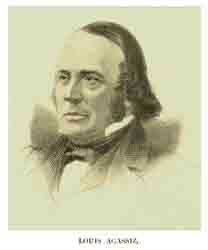 |
223 |
| Agricola (Georg Bauer) (1494-1555) |
015 |
|
| Alberti, Friedrich August von (1795-1878) | 460 |
|
| Arduino, Giovanni (1713-1795) | 037 |
|
| Barrande, Joachim (1799-1883) |
445 |
|
| Beche, Sir Henry Thomas de la (1796-1855) |
biography |
|
| Beyrich, Heinrich Ernst (1815-1896) |
146* |
|
| Bischof, Karl Gustav (1792-1870) |
202* |
|
| Brocchi, Giovanni Battista (1772-1826) | 095 |
|
| Brongniart, Adolphe Théodore (1801-1876) | 368 |
|
| Bronn, Heinrich Georg (1800-1862) | 364 |
|
| Buch, Leopold von (1774-1852) |
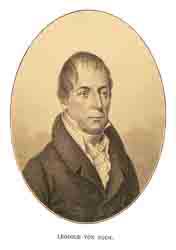 |
061 |
| Buckland, William (1784-1856) | 114 |
|
| Buffon, George Louis Leclerc de (1707-1788) | 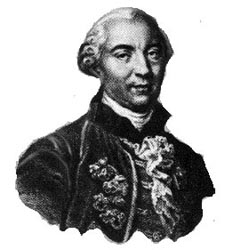 |
041 |
| Burmeister, Hermann Carl (1807-1892) | 407 |
|
| Conybeare, William Daniel (1787-1857) | 426 |
|
| Cope, Edward Drinker (1840-1897) | 382 |
|
| Cordier, Pierre Louis Antoine (1777-1862) | 325 |
|
| Cotteau, Gustave (1818-1894) | 396 |
|
| Cuvier, Leopold Christian Friedrich Dagobert Georges (1769-1832) |
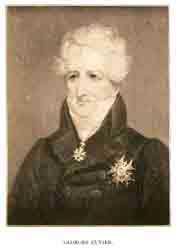 |
135 |
| Dana, James Dwight (1813-1895) | 304 |
|
| Daubrée, Gabriel August (????-1896) |
201* |
|
| Davidson, Thomas (1817-1885) | 399 |
|
| Deshayes, Paul Ger. (1796-1896) | 430 |
|
| Desor, Eduard (1811-1882) | 395 |
|
| Dolomieu, Guy S. Tancrède de (1750-1801) | 096 |
|
| Ebel, John Gottfried (1764-1830) | 091 |
|
| Ettingshausen, Baron Constantin Freiherr von (1862-1897) | 372 |
|
| Forbes, Edward (1815-1854) | 394 |
|
| Fracastoro, Hieronymus (1483-1553) | 014 |
|
| Füchsel, G. C. (1722-1773) | 036 |
|
| Goeppert, Heinrich Robert (1800-1884) | 370 |
|
| Goldfuss, Georg August (1782-1848) | 365 |
|
| Greenough, George Bellas (1778-1855) | 112 |
|
| Gressly, Amanz (1814-1865) | 502 |
|
| Guettard, Jean Etienne (1715-1786) | 039 |
|
| Hacquet, Balthazar (1739-1815) | 089 |
|
| Hall, James (1811-1898) | 442 |
|
| Hébert, Edmond (1812-1890) | 523 |
|
| Heer, Oswald (1809-1883) | 371 |
|
| Hooke, Robert (1635-1703) |
019 |
|
| Humboldt, Alexander von (1769-1859) |
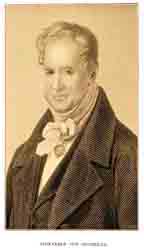 |
064 |
| Hutton, James (1726-1797) |
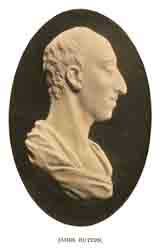 |
068 |
| Kircher, Athanasius (1602-1680) | 024 |
|
| Lamarck, Jean Baptiste de Monet, Chevalier de (1744-1829) |
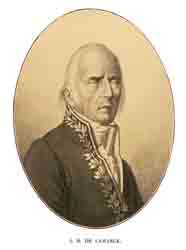 |
131 |
| Lehmann, Johann Gottlob (????-1767) | 035 |
|
| Leonhard, Carl Cäsar von (1799-1862) | 325 |
|
| Linnaeus (Carl von Linné) (1707-1778) |
116* |
|
| Lister, Martin (1638-1711) | 017 |
|
| Lyell, Sir Charles (1797-1875) |
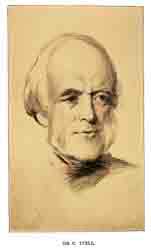 |
189 |
| MacCulloch, John (1773-1835) | 113 |
|
| Magnus, Albertus (Albert von Bollstædt)
(1193-1280) |
013* |
|
| Marsh, Othniel Charles (1831-1899) | 422 |
|
| Milne-Edwards. Henri (1800-1885) | 389 |
|
| Münster, Count George zu (1776-1844) | 365 |
|
| Murchison, Sir Roderick Impey (1792-1871) |
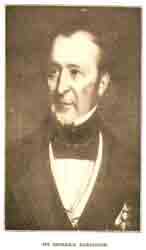 |
432 |
| Neumayr, Melchior (1845-1890) | 381 |
|
| Omalius d'Halloy, Jean baptiste Julien d' (1783-1875) | 106 |
|
| Oppel, Albert (1831-1865) | 508 |
|
| Orbigny, Alcide Dessaline d' (1802-1857) | 506 |
|
| Owen, Sir Richard (1804-1892) |
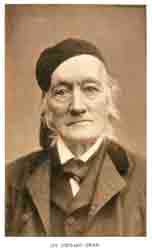 |
415 |
| Pallas, Peter Simon (1741-1811) | 050 |
|
| Phillips, John (1800-1874) | 436 |
|
| Pictet, François Jules (1809-1872) | 366 |
|
| Playfair, John (1748-1819) | 074 |
|
| Prestwich, Sir Joseph (1812-1896) | 529 |
|
| Ramsay, Sir Andrew Crombie (1814-189?) | 231 |
|
| Richthofen, Baron Ferdinand von (1833-1905) |
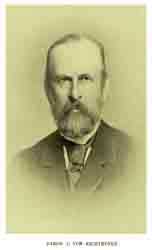 |
Biography |
| Rütimeyer, Ludwig (1825-1895) | 421 |
|
| Saint-Fond (1742-1819) |
046 |
|
| Saussure, Horace Benedicte de (1740-1799) | 052 |
|
| Scrope, George Poulett- (1797-1875) | 259 |
|
| Sedgwick, Adam (1785-1873) | 432 |
|
| Smith, William (1769-1839) | 109 |
|
| Steno, Nikolaus (1638-1687) | 025 |
|
| Sternberg, Kaspar Maria, Count von (1761-1838) | 368 |
|
| Suess, Eduard (1831-1914) |
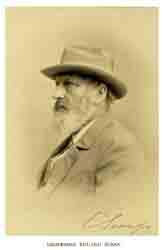 |
Biography |
| Walch, John Ernst Immanuel (1725-1778) | 021 |
|
| Werner, Abraham Gottlob (1749-1817) |
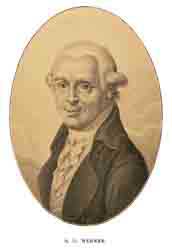 |
056 |
| Whiston, William (1666-1753) | 030 |
|
| Woodward, John (1665-1722) | 029 |